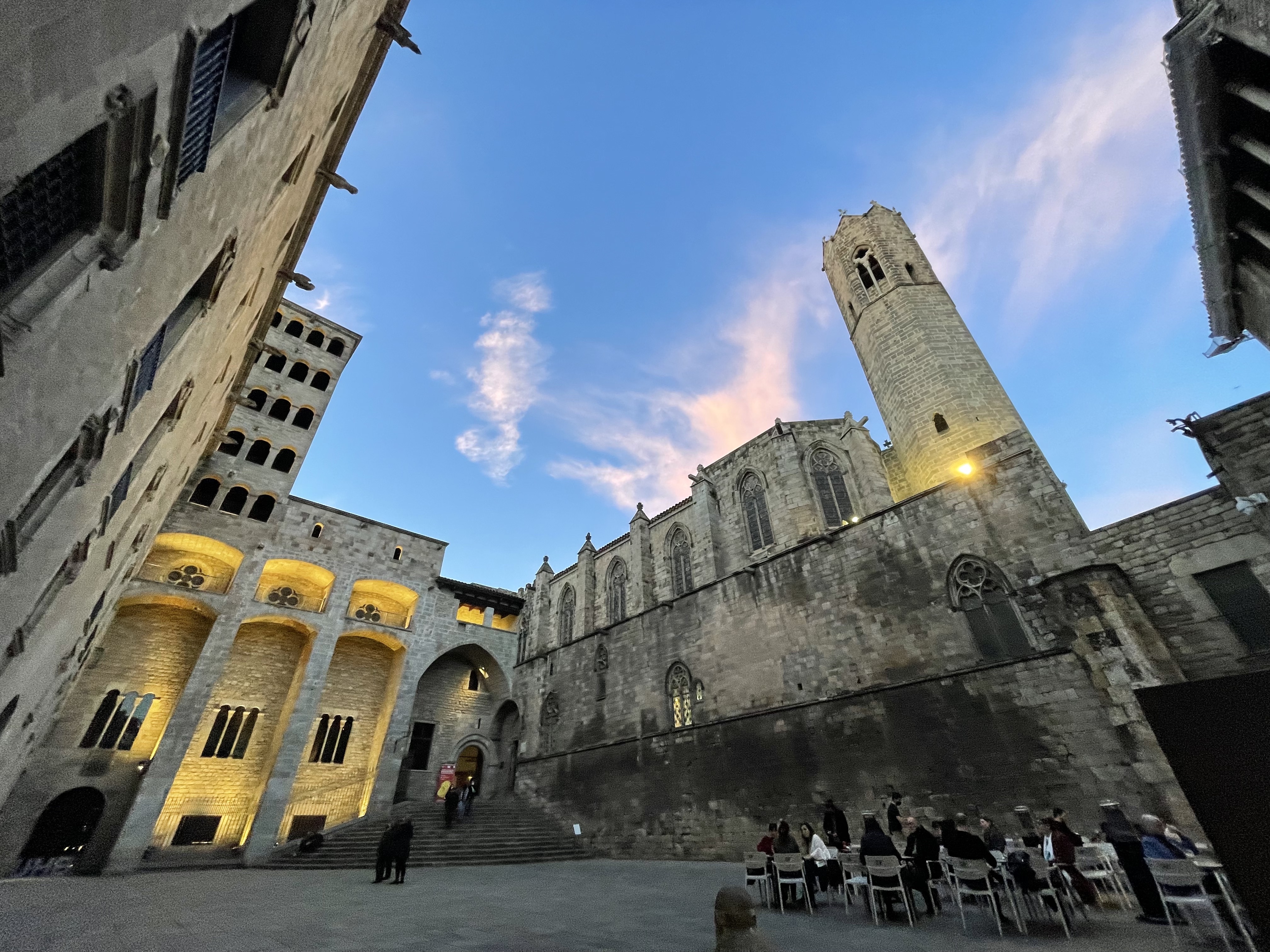Tuesday, 1st of April, 2025
Bites of Barcelona

Just like many cities, Barcelona is difficult to describe in just a handful of words. Barcelona is a visual masterpiece with sprinkles of Gaudí, Picasso, Gothic and ancient art. Barcelona is a city full of flavorful tapas, bombóns, along with wonderful music and dance. Barcelona is also a marvel for the ears listening to Catalan, a romance language that sounds like a blend of Spanish and French. Not to mention, I was having fun dancing around the city pointing out The Cheetah Girls 2 movie filming locations. For this blog, I will try to orient you to experience a collection of what I mentioned above.
Before starting a day full of walking, breakfast is vital, or at least un café con leche or a bombón (espresso with condesned milk). I love the latter, and it provides just the right amount of sugar to start the day.

In many cities, I take the advice of finding a major landmark to orient myself; to start building my cognitive map. An easy monument to start at is the Basílica de la Sagrada Família. La Sagrada Família is a church that was designed by Antoni Gaudí, began construction in March of 1882, and continues to be constructed to this day (according to the publishing date of this blog). When I visited with my now husband, we saw the church right after the Tower of the Virgin Mary had been completed. Different artists over the centuries have contributed their artistic flares to the facades and interiors of the church, which is why no one side looks quite like the other. For in-depth information on the church while here, I suggest using La Sagrada Família app (included in visits inside of the church) as the tour explains the concepts of each entrance into the church, window designs, and the mathematics of the building’s structure. For other audio/visual information for a walk through Barcelona, I recommend Rick Steve’s Travel App and YouTube.

From La Sagrada Família, I like to walk towards the Passeig de Gràcia. This continues a visual walk filled with Gaudí and Art Noveau buildings, such as La Pedrera (Casa Milà) and Casa Batlló. These two buildings, diagonally across from one another, were designed by Gaudí. They are whimpsical in design, yet grouned by nature, mathematics, and the reuse of fragmented ceramics. Visiting both buildings provides you with a close-up view of how Gaudí’s work shaped living quarters. Look at everything as every aspect of each room, courtyard, and even chimmneys on the roof were intentionally planned out. In addition, when outside of the buildings, if you look down on the Passeig de Gràcia, you will find more Gaudí below your feet. On the ground, hexagon tiles create lovely motifs that originated from Gaudí designs. These motifs can be found throughout his buildings in Barcelona. Essentially, at times in Barcelona, you are truly walking in a Gaudí world.

When you have finished admiring Gaudí and his works, head towards Els Quatre Gats, or the Four Cats. This is a wonderful place to have a nice lunch or dinner, as well as take a moment to orient yourself into el Barrio Gótico (the Gothic Quarter). It is important to note as from this point forward, the pathways that are discussed transition from othoganal, large passageways, into organic, meandering streets. Els Quatre Gats is home to a few artists that used to frequent this very restaurant, including Picasso. If you mainly know Picasso for his later abstract cubist art, take a look around the restaurant and the menu for some of his work. A major tunring point I had on my trip to Barcelona was understanding that Picasso is a more complex artist than I thought. I will touch on that more later.

Back in the Gothic quarter, I quite enjoy the Plaça del Rei for a handful of reasons. First, you can explore the Palau Reial Major and gardens where the Kings and Queens of Aragon once lived and walked, including King Ferdinand and Queen Isabella. Secondly, this is where the finale of The Cheetah Girls 2 was filmed, so of course I had to sing a bit as I looked through the windows of the Palace into the square, and more outside. Thirdly, there is a multitude of ancient Roman monuments below your feet, flamenco performances down the street, and the Picasso Museum, all within walking distance.

The ancient Roman monuments will take you to subterranean levels of the city, allowing you to see the layers of Barcelona and ancient Roman life with a twist of local flavor. The statues, capitals, and architecture here are not like what you would see in Rome; thus these ruins provide a visual of how Roman artistic standards evolved across the Roman Empire.
On the flip side, the Museu Picasso is also a wonder to behold. This museum holds over 999 pieces of his artwork that highlight his transitions from typical, classically trained approaches to art, to his blue period, other periods in between, and of course, his abstract and cubist periods. By seeing a large body of his work, along side the history and works of his family members, I became a Picasso art lover.

For art with some music, attending a flamenco dancing event in the area is an incredible experience to behold. Flamenco is such a powerful and emotional dance, that you can hear stories being told through powerful footwork, claps, a guitar, and a wave of a skirt. I suggest it as an evening activity as it is a riveting and relaxing way to end the day.
As I said earlier, Barcelona is more than I could describe in one page. Perhaps next time I could show you around the Mirador, Barceloneta, Park Güell, or the beach. In the meantime, enjoy this bite of Barcelona.
